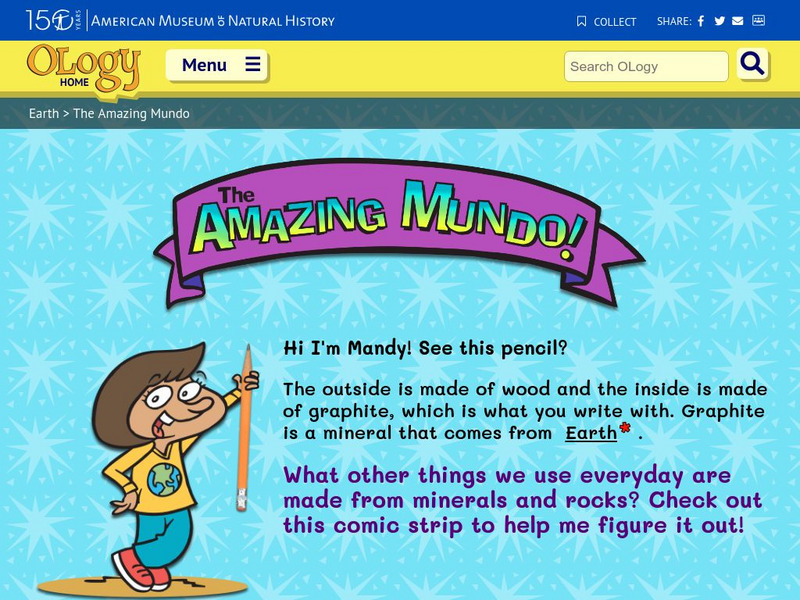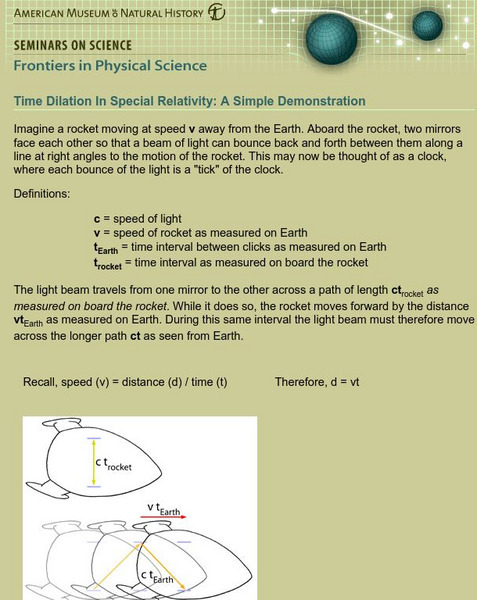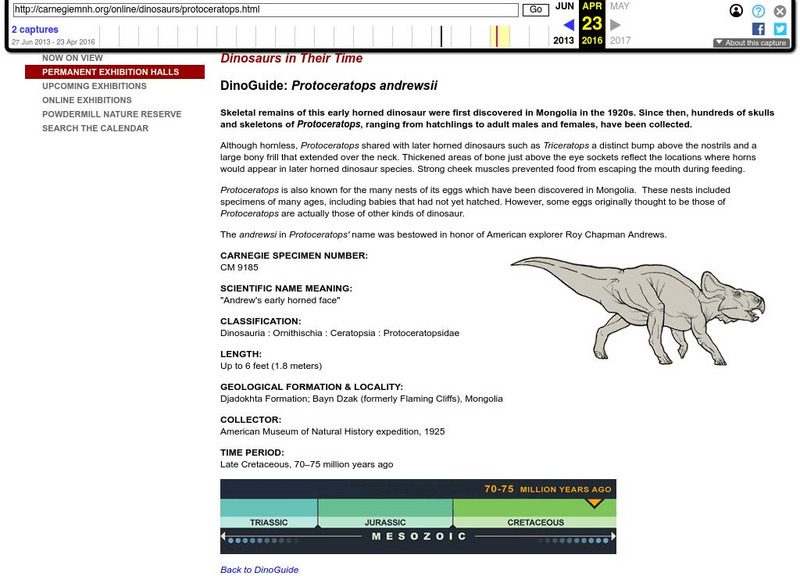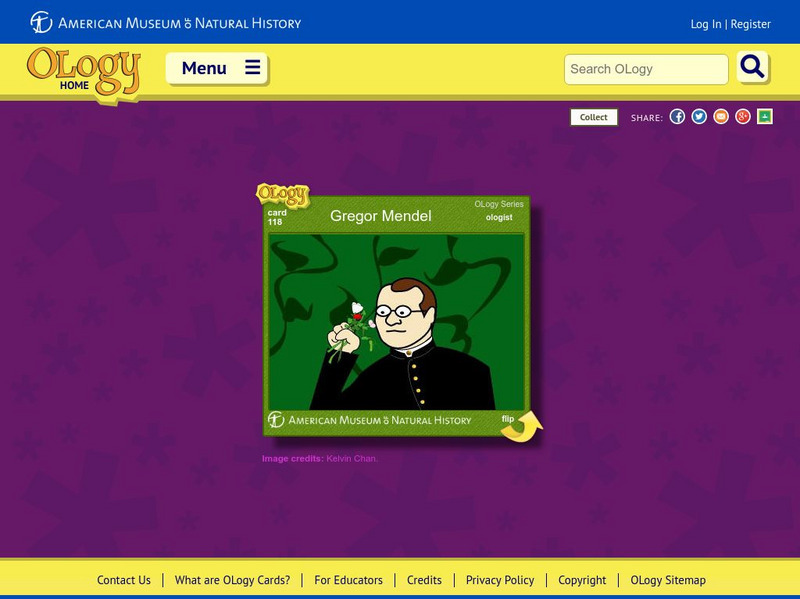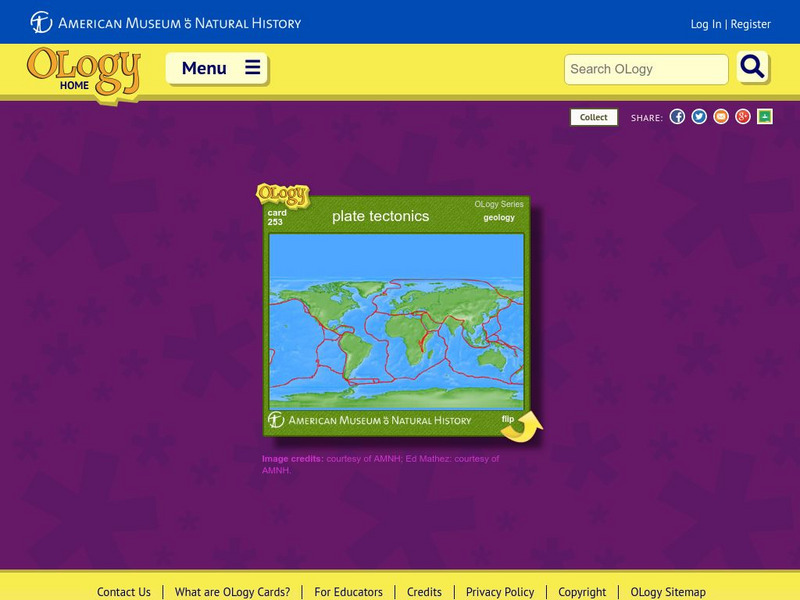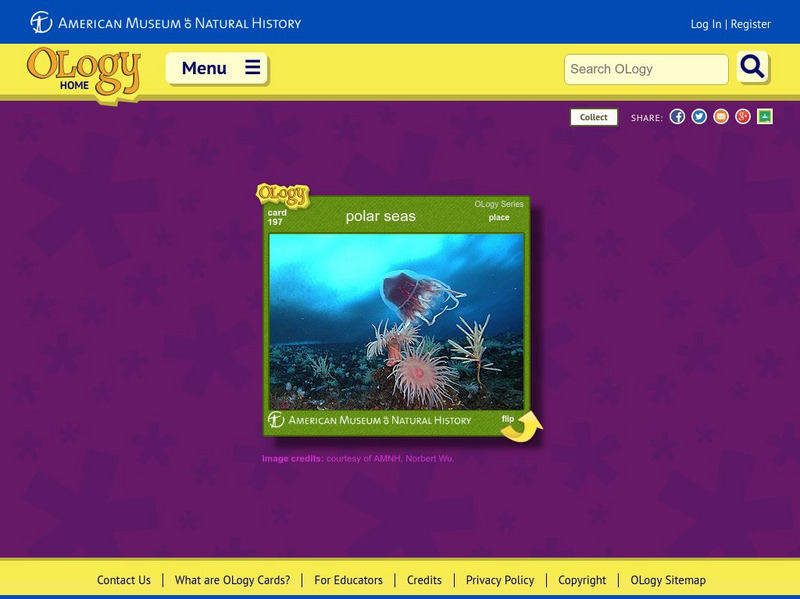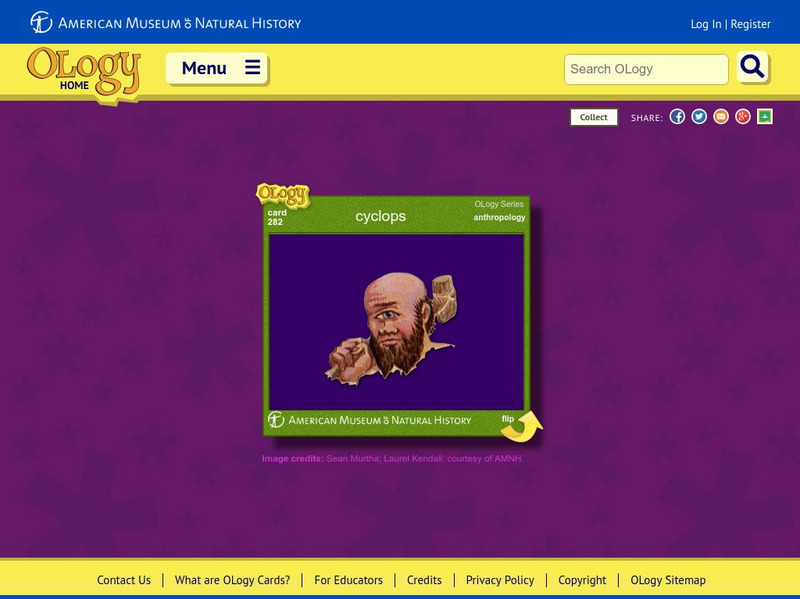American Museum of Natural History
American Museum of Natural History: Traveling the Silk Road: Take a Journey
Learn about some of the ancient Asian and Middle Eastern cities along the Silk Road between AD 600 and 1200. Highlights Xian, Turfan, Samarkand, and Baghdad, as well as those who traveled by sea.
American Museum of Natural History
American Museum of Natural History: O Logy: Beautiful Breeds: Arabian
Detailed illustrations and description of the Arabian, a horse prized throughout history for its power and speed. Choose Arabian from the list on the right.
American Museum of Natural History
American Museum of Natural History: O Logy: The Amazing Mundo
Introduction, in comic strip format, to a selection of minerals and rocks that are used to make everyday objects, such as glass, aluminum foil, coins, and computer chips.
American Museum of Natural History
American Museum of Natural History: O Logy: What's the Big Idea? Earth
Find an overview of the Earth and some of the approaches scientists take in studying it, in this click-through series of short perspectives on the topic.
Smithsonian Institution
National Museum of Natural History: Vikings: Game of Hnefatafl
This history project features an old Norse game that is found in many Viking and Norse sites. It consists of a board and game pieces like chess and checkers. Students can make their own board and playing pieces and challenge each other...
American Museum of Natural History
American Museum of Natural History: O Logy: What's the Big Idea? Astronomy
An introduction to key concepts about the science of astronomy. With interactive flash cards that open in new windows to help you learn more.
American Museum of Natural History
American Museum of Natural History: O Logy: If Rocks Could Talk: Obsidian
A simple explanation of how obsidian rock is formed.
American Museum of Natural History
American Museum of Natural History: O Logy: If Rocks Could Talk: Granite
A simple explanation of how granite rock is formed.
American Museum of Natural History
American Museum of Natural History: O Logy: If Rocks Could Talk: Limestone
A simple explanation of how limestone rock is formed.
American Museum of Natural History
American Museum of Natural History: O Logy: If Rocks Could Talk: Sandstone
A simple explanation of how sandstone rock is formed.
American Museum of Natural History
American Museum of Natural History: Ology: Astronomy: In Pictures: Beyond Planet Earth
What would it be like to travel across the solar system and explore space? Take a look at some of the places that humans might go to someday, and the questions that scientists are asking.
American Museum of Natural History
American Museum of Natural History: Ology: Brain: Boost Your Brain Power!
Test how good and how quick your visual memory is in these games of recall.
American Museum of Natural History
American Museum of Natural History: Resources: Time Dilation Equation
Using an example of light bouncing back and forth between two mirrors in a rocket, time dilation is explained in this resource. Step-by-step calculations using Einstein's time dilation equation are shown.
University of Florida
Florida Museum of Natural History: About the Florida Bay
Explore the habitats found where the Everglades run into the sea. A wonderful resource for learning about a unique part of the world.
Carnegie Museum of Natural History
Carnegie Museum of Natural History: Carnegie's Dinosaurs: Dino Guide: Protocerato
This resource presents a brief overview of the Protoceratops.
Smithsonian Institution
National Museum of Natural History: The Splendor of Diamonds
A collection of seven rare diamond types, among the most valuable in the world. All but one is a unique color, and each has a special title. Read a short descriptive history of each diamond.
American Museum of Natural History
American Museum of Natural History: Exhibition: Extreme Mammals
Learn about the body structure, habitat, reproduction, movement, and evolution of extreme mammals, both extinct and living, through interative animation and short videos.
American Museum of Natural History
American Museum of Natural History: It Takes All Kinds to Make a World
Learn about the biodiversity found in the ocean by looking at examples of marine life.
American Museum of Natural History
American Museum of Natural History: Gregor Mendel O Logy Card
Flip over this interactive OLogy card and start learning bite-size pieces of useful information about Gregor Johann Mendel.
American Museum of Natural History
American Museum of Natural History: Giant Squid O Logy Card
Flip over this interactive OLogy card and start learning bite-size pieces of useful information about the giant squid, including details regarding its 2006 discovery.
American Museum of Natural History
American Museum of Natural History: Plate Tectonics O Logy Card
Flip over this interactive OLogy card to find fast facts, questions and answers, and similar bite-size pieces of information about plate tectonics.
American Museum of Natural History
American Museum of Natural History: Penicillin O Logy Card
Turn over this interactive OLogy card and start learning bite-size pieces of useful information about penicillin.
American Museum of Natural History
American Museum of Natural History: Polar Seas O Logy Card
Flip over this interactive OLogy card and start learning bite-size pieces of useful information about the marine life that lives in polar-sea regions.
American Museum of Natural History
American Museum of Natural History: O Logy: Cyclops
Find out the background of the mythical cyclops from Greek mythology. It might surprise you! Flashcard format.


